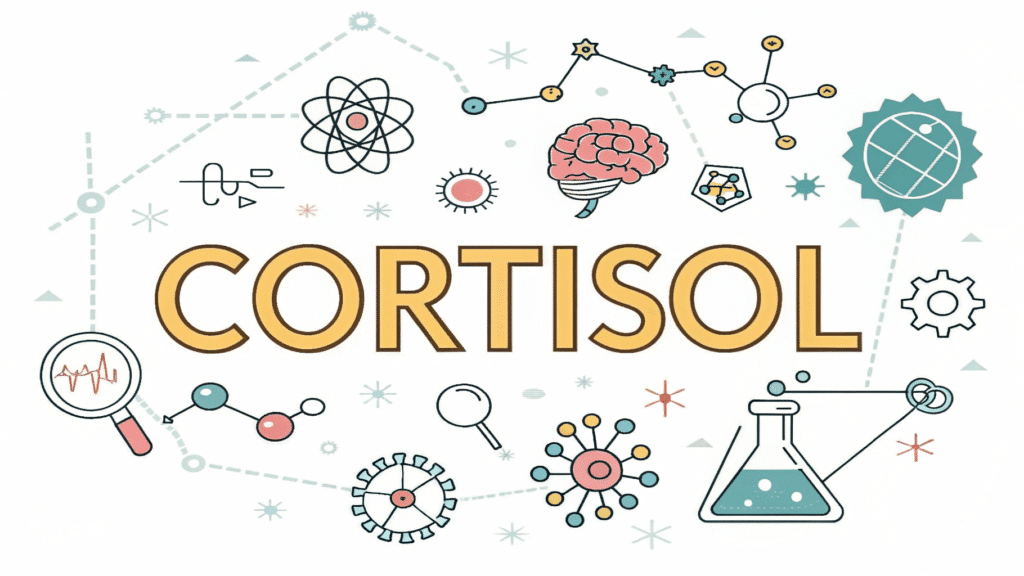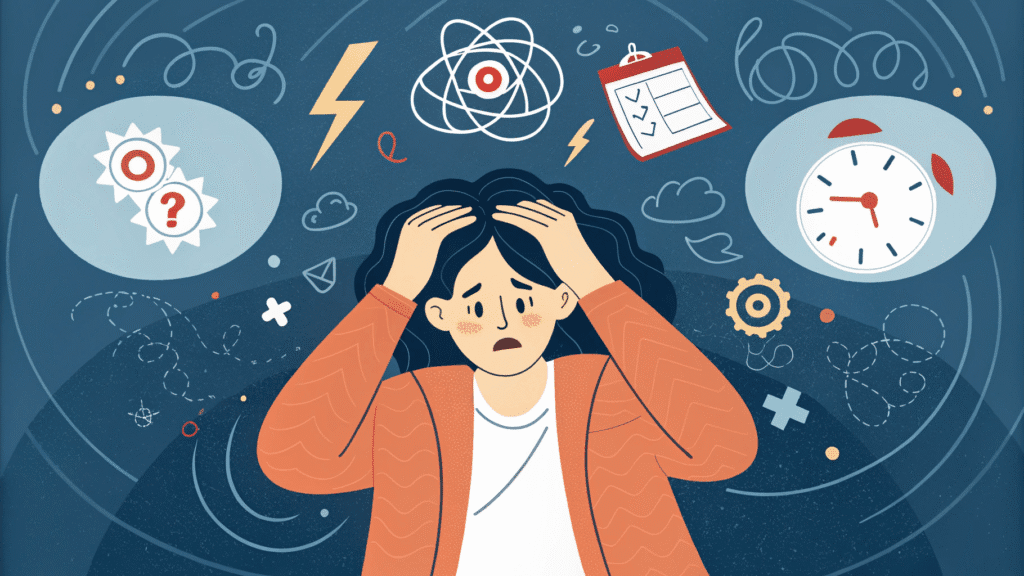Do you have a weakened immune system, sleep problems, and more or less appetite than usual? This may be related to your cortisol, better known as the “stress hormone.” Following a Cortisol Reduction Diet can help rebalance your body.
This hormone is called the stress hormone because it gives your body the energy it needs to fight or flee in stressful situations. In the past, for example in the days of hunter-gatherers, it was vitally important. But nowadays, stress is more often mental than physical.

Cortisol Reduction Diet : What is cortisol?
Cortisol is a hormone produced by our body in the adrenal cortex. Cortisol regulates important processes in the body, such as the biorhythm, metabolism, and immune system. It is also produced in stressful situations and puts our body in a state of readiness, which is why it is also known as the stress hormone.
What does cortisol do in your body?
Cortisol controls important processes in your body, such as your biorhythm, metabolism, and immune system. In the morning, just before you wake up, cortisol levels are at their highest. During the day, they decrease again, so that by evening you are tired enough to fall asleep.
In addition, cortisol is produced in stressful situations and puts your body on alert. Your heart rate increases and your blood sugar levels rise. This gives you a temporary boost of energy to deal with an exciting situation; these are known as cortisol stress spikes.
Nowadays, however, stress is increasingly mental rather than physical. For example, a study on mental stress shows that within 15 to 20 minutes, cortisol levels can double in work-related situations, such as a job application process. We then produce excess cortisol, which is not used by our bodies. If similar stressful moments occur more often, there can be a buildup and excess. Long-term high cortisol levels will be present.

Cortisol Reduction Diet : Causes of long-term excess cortisol
Cortisol levels are highest in the early morning, before and after waking up. In the morning, cortisol levels are generally considered optimal between 6 and 23 mcg/dL (micrograms per deciliter). However, the exact optimal range may vary depending on the individual and the laboratory performing the test.
It is important to note that there is no “perfect” cortisol level that applies to everyone. Rather, it is balance and adequate fluctuation throughout the day that matters. Cortisol levels may rise in response to stressful situations, which is normal. Problems arise when cortisol levels remain chronically high. Here are some of the causes that can lead to high cortisol levels over long periods of time:
1. Stress
When you find yourself in a stressful situation, your adrenal glands produce cortisol so that you have enough energy to respond. However, this becomes a problem when you are under chronic stress. The adrenal glands then constantly produce cortisol, and at some point, the body can no longer assimilate it.
2. Pituitary problems
Inside the brain is the pituitary gland, also known as the master gland. This gland controls many of the body’s functions and ensures that the brain receives the signals it needs to produce the right hormones. When the pituitary gland is not functioning optimally, it can secrete too much or too little hormones, which can disrupt cortisol levels.
Pituitary hormones act as signals for the adrenal gland to produce cortisol, which also leads to overproduction.
3. Adrenal tumors
You may develop a tumor on one or both adrenal glands. The adrenal glands are located above the kidneys and are responsible for releasing cortisol. The presence of a tumor, whether benign or malignant, increases cortisol release.
4. Medications
Certain medications also have the known side effect of increasing cortisol levels. These are mainly long-term, intensive-use medications, such as corticosteroids, used to treat asthma. If you think your medication is causing you problems, talk to your doctor.
What are the symptoms of high cortisol levels?
Prolonged high cortisol levels can cause several problems. Common symptoms of high cortisol include poor sleep, fatigue, negative emotions, and excess abdominal fat. Here is a complete list of symptoms of excess cortisol.
-Excess belly fat
-Fatigue
-Poor sleep
-General negativity
-A more puffy face
-Acne
-Thicker skin
-Easier bruising
-Red face
-Longer recovery time
-Weakened muscles
-Quick to get irritated
-Decreased desire for intimacy

Can you measure your cortisol yourself?
Do you recognize one or more of these symptoms and want to know if your cortisol level is actually too high? With a cortisol test, you can analyze the amount of cortisol in your saliva using a saliva sample. By measuring your cortisol level, you can determine if it is too low or too high.
Normal cortisol values vary depending on the time of day when the measurement is taken. A level between 6 and 23 mcg/dl indicates that cortisol secretion after waking up is sufficient.
Cortisol Reduction Diet : How can I reduce my cortisol levels?
There are several ways to reduce your cortisol levels. You can already take a big step forward by changing your lifestyle. In addition, there are natural dietary supplements that can help you reduce your stress hormone. Here are our 9 tips for reducing your cortisol levels:
1. Get enough sleep
It is important to get enough sleep, because cortisol levels decrease during sleep. In addition, you can better cope with stimuli (stress) when you are well rested. Do you have trouble falling asleep? Read our page with tips on sleep.
2. Exercise, but don’t overdo it
Regular exercise is associated with emotional resilience to acute stress. Studies show, for example, that a sport such as yoga has a positive effect on lowering cortisol levels. Avoid overtraining, as this will lead to higher cortisol levels in the body. Particularly calm forms of exercise (e.g., walking, slow running, and cycling) are ideal, as the risk of overtraining is lower.
3. Pay attention to your diet
Diet can also play a role in the body’s production of cortisol. Excess sugar, for example, is thought to accelerate cortisol production, which can increase cardiovascular risk.
If your diet consists mainly of varied, unprocessed foods and you consume enough carbohydrates, you can also reduce your cortisol levels. This is because carbohydrates ensure a sufficient supply of vitamins and minerals to enable the body to function normally.
Carbohydrates also influence serotonin levels in the brain, which can make you feel calmer. Carbohydrates also trigger the release of insulin, a hormone that helps absorb glucose into cells.
The increase in blood sugar after a carbohydrate-rich meal can lead to a decrease in cortisol production in the body. Excess cortisol can also make weight loss more difficult, as it increases cravings for comfort foods and processed foods.
4. Stay hydrated, especially during exercise
Early research has shown that stress causes dehydration in the body. Dehydration also contributes to the body’s stress response. The two therefore reinforce each other. This is reason enough to drink enough water. In general, 1.5 to 2 liters per day is sufficient, but those who exercise frequently have a greater need for water.

5. Take supplements
Omega-3: can have a positive effect on your mood and stress hormone levels. This fatty acid reduces cortisol levels and makes you feel less stressed. Your body does not produce omega-3, but you can find it in food. Eat more salmon and flaxseed oil, for example; these foods are rich in omega-3. You can also supplement your omega-3 levels with an omega-3 supplement.
Ashwagandha: In Asia, people have known for centuries how to manage stress using the ashwagandha plant. It has a positive impact on your mental well-being and energy levels. It has been scientifically proven that this plant can reduce your stress levels.
Phosphatidylserine: Research has shown that phosphatidylserine inhibits the release of cortisol in response to exercise stress. After taking 300 mg of phosphatidylserine for one month, subjects reported feeling less stressed and in a better mood. Phosphatidylserine is found in foods such as fatty fish, but it is also available as a supplement.
6. Relax more often
The more relaxed you are, the less cortisol your body produces. Of course, this is easier said than done. Fortunately, there are simple ways to relax and manage stress through activities that give you positive energy. Laughing and listening to music are also associated with lower cortisol levels.
One tip is to differentiate between different relaxation activities. Some activities are more likely to fall into the “nap” category, such as cuddling with your cat or drinking tea. Next are “relaxing” activities, such as reading a book, doing puzzles, modeling clay, or meditating.
The last category is “physical activities,” such as meeting friends, taking a brisk walk, exercising, etc. Be sure to practice activities from each category alongside your work and other stressful situations to maintain your balance.
7. Do breathing exercises.
Breathing plays an important role in stress. Breathe deeply to reduce your stress and improve your mood.
8. Try meditation.
Breathing plays an important role in stress. Breathe deeply to reduce your stress and improve your mood.
9. Drink black tea.
Sometimes the solution is closer than you think! In this case, we’re talking about black tea. According to scientists, this drink reduces your cortisol levels and helps your body recover after a stressful situation.
Cortisol Reduction Diet : Finally, take care of yourself
If your cortisol levels are too high, all these tips will help you get started. Fortunately, most symptoms and causes are lifestyle-related and you can remedy them yourself. Restful sleep, a healthy and varied diet, and sufficient exercise will help greatly. But above all, enjoy life and savor the little moments.



